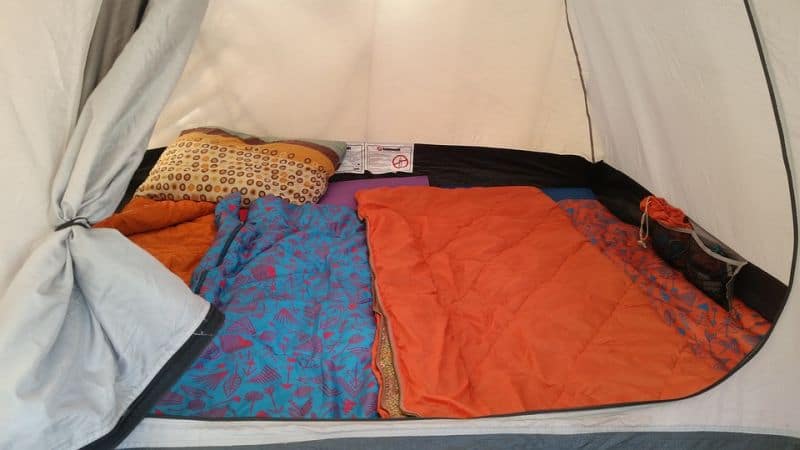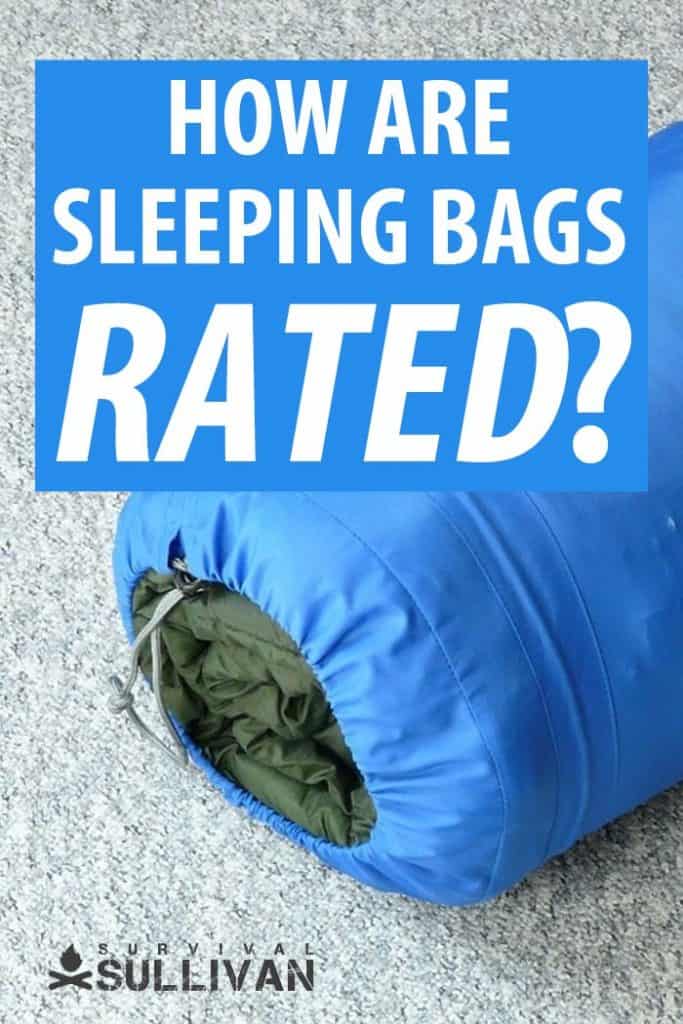If you are in the market for a sleeping bag, and want ‘the best’ for the amount you have to spend there will be various ratings to look out for, and these will vary in importance from person to person.
For example, an eco-warrior will want to know the carbon footprint for the sleeping bag, whether the down, if it is a down bag, is ethically sourced, and how biodegradable a synthetic sleeping bag will be.

A person going on a mountaineering trip will want to know the EN 13537 or ISO 23537 rating for warmth to ensure a comfortable sleep during their trip.
Sleeping bags are rated on how warm they will keep you at various temperatures, according to international standards, namely the ISO 23537 which was brought in during 2016, or the earlier EN 13537, a European rating.
Both ratings are scientifically controlled to check thermal transference and thermal insulation (among others things) all carried out in accredited laboratories. The loft is also laboratory tested to ensure it is accurate, then the Season ratings are applied to bags.
Is What You Call Warm What I Would Call Warm?
In the past not all factors were considered when applying a rating to a sleeping bag with the result that bags with the same rating provided different types of sleep comfort for different people.
In 2005 the EN 13537, the European criterion for rating the warmth of sleeping bags was brought into effect by the European Committee for Standardization, known as CEN from the French, Comité Européen de Normalisation.
This in effect meant a standard laboratory test is carried out on sleeping bags from different manufacturers. In 2016 the ISO (International Organization for Standardization 23537 – 1:2016 was brought in and has recently been amended so the requirements and test methods are current.
This method is used for labelling adult-size sleeping bags for both sport and leisure activities. It does not include testing for military use, extreme conditions.
It also does not include testing for children’s sleeping bags as it is not allowed, and would be unethical to subject children and babies to climatic sleep chamber trials.
An explanation of the EN or ISO ratings is as follows:
- Comfort: the temperature at which the average adult can expect to have a comfortable sleep, lying on their back.
- Maximum temperature or upper limit: the highest temperature at which the average person can expect to have a comfortable night’s sleep without too much sweating. The person may not have the sleeping bag fully closed.
- Lower limit: the temperature at which the average person would be comfortably warm in a curled-up position.
- Extreme: this rating comes with a caution – it’s the coldest temperature where the average adult should survive without freezing. This is definitely not a rating you should aim for as you will be uncomfortable and doing your best to stop your teeth chattering in your sleeping bag and there is the risk of hypothermia.
Choosing the Temperature Rating for Your Sleeping Bag
The ratings refer to averages – but no one is average, like there is no family with the statistical 2.2 children. You’ll know whether you are a warm or cold sleeper and choose your upper and lower limits accordingly.
Women often feel the cold more than men, and your metabolism will need to be considered as well as the way you like to sleep. Some like sleeping curled up conserving warmth, others like to sleep splayed out meaning more loss of heat.
Certain shapes of sleeping bag will appeal to some and not others…
For example, the mommy-type sleeping bag may feel too confined for those who prefer the roomy foot space of the regular rectangular bag, even though it doesn’t conserve warmth like the mummy bag.
It’s best to look for a sleeping bag that has a fairly wide range between the lower and upper limits because then you’ll have an adaptable sleeping bag that can be used in a number of camping situations – you’ll just add more clothes when you jump in to keep warmer.
If you get cold more easily than the average person, go for a sleeping bag with a higher lower limit.
How Labs Test to Get the Warmth Rating
To establish the degree ratings, laboratories follow a standard test with a thermal manikin in the shape of a human with a heated surface, used for determining thermal transference through the sleeping bag materials.
Then they test thermal resistance for the insulating properties of the sleeping bag considering the outer shell, the filling used, the air volume inside the sleeping bag, what garments are worn by the user, and the thickness of the camping pad under the sleeping bag.
Tests to establish lab accuracy have also been done by sending a batch of identical sleeping bags to various laboratories, then a spreadsheet of the results is compiled to see which labs are closest to each-other in results, to ensure uniformity.
There are various parameters within which the tests must be conducted. They also test for the thermal insulation rating after washing the sleeping bag to ensure you’re not left out in the cold after a couple of washes!
The inside dimensions of the sleeping bag are checked, as well as the width for labelling purposes. Then the foot space is considered. The type of clothing worn by the manikin for testing is standard, so it all becomes very scientific and specific.
If you want to read in-depth about the specifications for establishing ratings then click here https://www.sis.se/api/document/preview/920965/
What Season Ratings Mean
When you buy a sleeping bag you need to decide when you are most likely to go camping.
You don’t want a summer bag that will leave you shivering on cooler nights, or a mountaineer’s bag that will have you drenched in sweat in warmer weather.
Season Rating
- Season 1 – warm summer camping with temps 41° F (5° C) or above.
- Season 2 – spring and later summer camping with temps of around 32° F to 41° F (0° C to 5°C).
- Season 3 – cold night camping without frost expected from around 32° F to 23° F (0° C to -5° C).
- Season 4 – winter camping, suited to temperatures going as low as 14° F (-10° C).
- Season 5 – extreme mountaineers will need this rating as it’s suitable for temperatures as low as -40° F (-40° C).
Loft Ratings
The loft of the sleeping bag is also rated according to how much is expands after being compressed. Under lab conditions, one ounce of compressed fill is tested for expansion – the higher the figure the better the insulation.
One ounce of fill that expands to fill 600 cubic inches will have a loft rating of 600, and one that has a loft rating of 900 will expand to fill 900 cubic inches.
It’s the spaces between the fibres or down that trap the heat and keep you warm – so the higher the number for the loft the better in terms of rating.
Additional Ratings
The responsible thing to do is check labels to see that products are biodegradable, non-toxic when they enter the eco system, that means no perfluorocarbons, (PFCs) and that down fillings, are ethically sourced.
Doing some reading and research beforehand will make you an informed camper, whose love for nature will not inadvertently lead to more harm through careless choices.
You’ll also be a comfortable camper snuggled in your high loft, thermally insulated sleeping bag.


Traveler, photographer, writer. I’m eternally curious, in love with the natural world. How people can survive in harmony with nature has fueled my food safety and survival gardening practices.
At the age of 12, I found a newspaper advertisement for a 155-acre farm at a really good price and showed my parents one Sunday morning. They bought it and I happily started planting vegetables, peanuts, maize and keeping bees with the help of the local labor.
Once I married wherever we moved it was all about planting food, keeping chickens and ducks, permaculture and creating micro-climates. I learned how to build wooden cabins and outdoor furniture from pallets, and baked and cooked home-grown produce, developing recipes as I went along.
